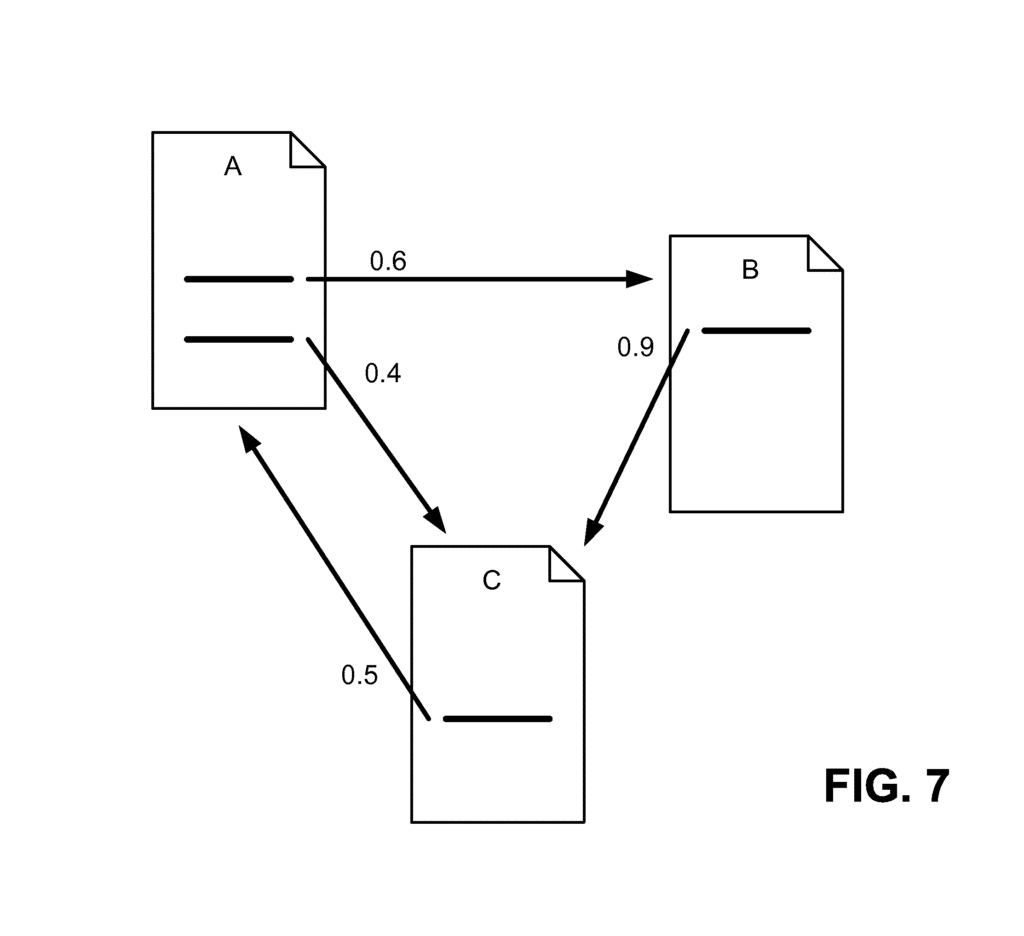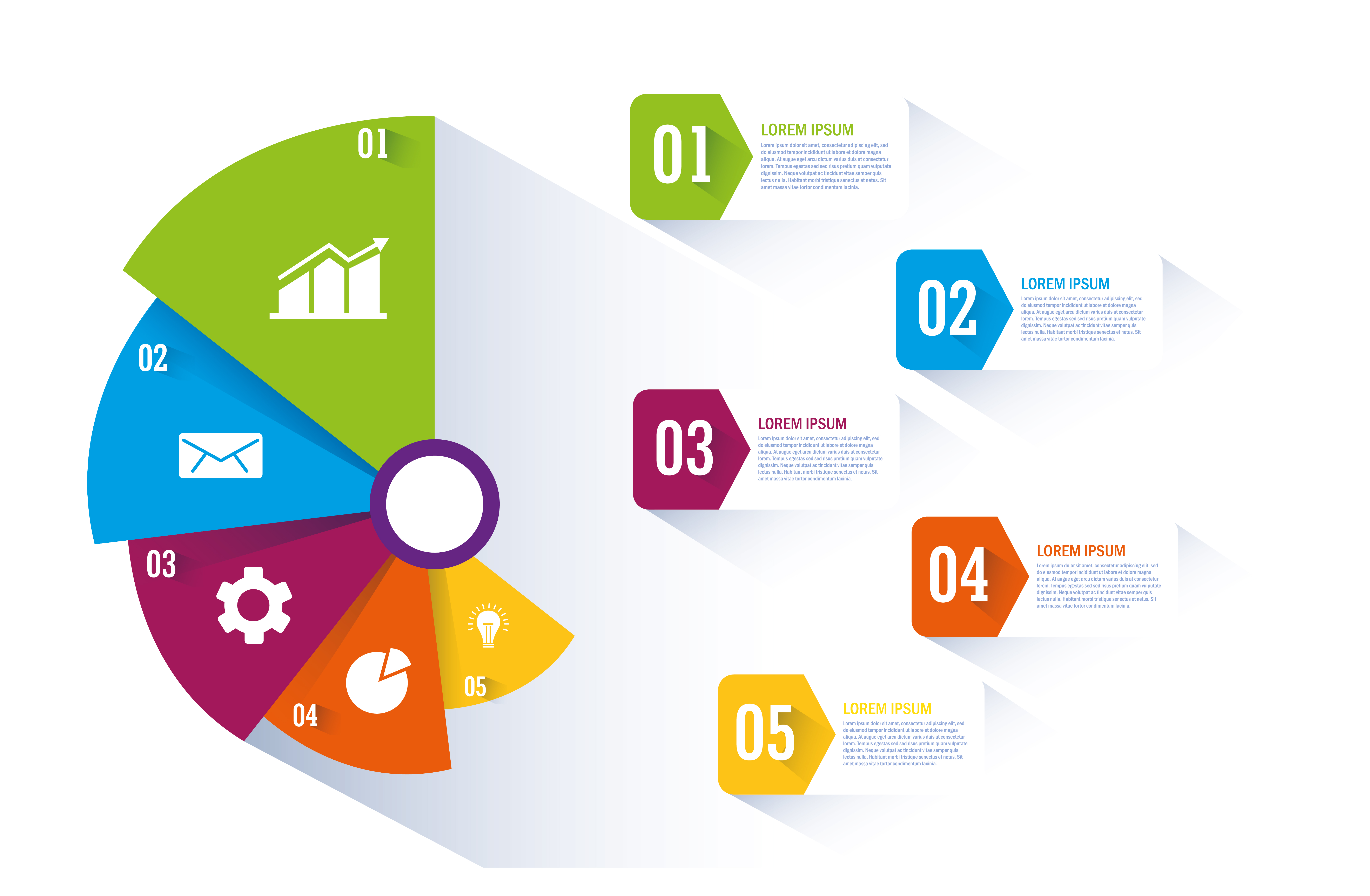Off-page SEO refers to actions taken outside of your website to improve its search engine rankings and credibility. Unlike on-page SEO, which involves optimizing content and elements within a page, off-page SEO focuses on building a website’s authority and reputation through external factors. Some important concepts related to Off-Page SEO are Domain Authority & Backlinks.
Domain Authority (DA): is a search engine ranking score developed by Moz that predicts how well a website will rank on search engine results pages (SERPs). The DA score ranges from 1 to 100, with higher scores indicating a greater ability to rank.
Domain Authority is not an official Google metric but is widely used in SEO to assess a website’s competitive strength. This metric is the direct counterpart to SEMRushes “Authority Score”. These two terms are not to be confused with “Backlink Authority” which is a separate metric all together, these differences are highlighted below:
| Feature | Domain Authority (DA) & Authority Score | Backlink Authority (Link Equity) |
| Scope | Entire Domain | Individual Links |
| Focus | Overall Site Strength | Quality and value of specific links |
| Primary Use | Benchmarking Domain Competitiveness | Assessing impact of each backlink |
| Key Metrics | Total backlinks, linking root domains | Page Authority, Link context, link type |
| Affected by | Entire backlink profile | Sources page authority, relevance and placement |
What are Backlinks?
Backlinks are links from one website to another, often referred to as “inbound” or “incoming” links. They are crucial in SEO (Search Engine Optimization) because they act as a form of “endorsement” from one site to another. When a website links to your site, it’s essentially saying, “This content is valuable or trustworthy.”

Search engines like Google use backlinks as a signal to determine a page’s authority, relevance, and trustworthiness.
Here’s How it Works:
- Backlink Quality: The quality (Trustworthiness, Domain Authority, Topical Authority) and quantity of backlinks pointing to a website are critical.
- Root Domains Linking to the Site: Having backlinks from unique root domains (distinct websites) is often more valuable than having numerous links from the same site.
- Relevance and Context of Links: Links from sites within the same industry or niche are often more valuable, as they signal that your site is relevant in that specific topic area.
- Natural Profile: How natural the backlink looks(Algorithmic Contextual Understanding as well as NLP(Natural Language Processing)
- Organic Traffic: Amount of unpaid visitors and their clickthrough rate
- Moz’s Proprietary Algorithm: DA is calculated based on a machine learning algorithm that considers various other factors as well.
- Link Prominence*
What is Link Prominence?
Link prominence is the importance and visibility of a link on a webpage, which can impact how much value search engines assign to it. The more prominent a link is, the more likely it is to be noticed by users and search engines, which can make it a stronger ranking signal.
Link prominence is determined with the Reasonable Surfer Model.

The Reasonable Surfer Model is a concept in SEO that suggests not all links on a webpage are treated equally by search engines, as they evaluate the likelihood that a user would click on a particular link based on its context, placement, and relevance. This model prioritizes high-quality, contextually relevant links over generic or less-visible ones, influencing how link equity is distributed across pages.
Some of these characteristics are:
- Link Placement: Links in prominent areas, such as within main content sections, carry more weight than links in less visible areas, like footers, sidebars and bottom of content.
- Link Context and Relevance: Links that appear in relevant, well-written content are more likely to be clicked and thus are weighted higher. Contextual links within the body text are valued more than links in non-contextual areas like generic navigation.
- Anchor Text: The clickable text of a link (anchor text) is a critical factor. The model considers whether the anchor text is relevant and likely to prompt a click from a reader. As previously mentioned it is important to make the text natural looking.

- Link Attributes (e.g., Do-follow or No-follow): Links tagged as “no-follow” do not pass authority, while “do-follow” links do, so these tags affect how much authority or value is transferred, it is important to properly label links because incorrectly labeled links are considered to be against Google’s terms of service. Examples of tags include:
- rel = “nofollow” – used to identify links that the publisher does not want to endorse, google is likely to comply
- rel = “sponsored” – used to identify links that were paid for by a linked site.
- rel = “ugc” – used to identify links that were places by users
How Do I Acquire Backlinks?
In order to target which backlinks you want to acquire it is important to analyze what backlinks your competitors are using. One way to do this is by using SEMRUSH’s link building tool, with this you can look at competitors websites to see what other domains are likely to link to you
Now that we have discussed how backlinks are ranked it is now time to discuss how to acquire backlinks. There are 4 main ways to acquire backlinks: buying, asking, adding and earning (Organic Growth).
Earning backlinks
Earning backlinks has a lot of overlap with asking for backlinks, the difference being that earning backlinks is centered around other domains organically using your content and linking to it without being asked.
Some examples of ways to earn links include:
- Create Linkable Content Assets:
- Infographics: Infographics are highly shareable visuals that can condense complex data, processes, or ideas into a visually engaging and easy-to-understand format.
- Videos: High-quality videos like tutorials, product demonstrations, or explainer videos attract attention and can be embedded on other sites. Hosting them on platforms like YouTube or Vimeo with a link to your website in the description can help drive traffic and earn backlinks.
- Graphs and Charts: Unique, data-driven charts and graphs simplify complex information and make it easily digestible.
- Art and Illustrations: Original artwork, illustrations, or animations can help your site stand out and get shared by art-related websites, social media, and influencers.

- Original Research and Data:
- Surveys and Studies: Conducting original surveys, polls, or studies and publishing the findings can provide unique data not available elsewhere.
- Case Studies: Case studies offer in-depth looks into specific examples, which are valuable for readers looking for real-world applications. Case studies often attract attention from industry websites and are frequently referenced in articles covering the topic, as they provide concrete evidence and credibility.
- Industry Statistics and Reports: Collecting, organizing, and presenting industry statistics or creating comprehensive reports on trends in your field can make your site a reference point.
- Tools and calculators:
- Interactive Calculators: Calculators, like mortgage calculators, ROI calculators, or calorie counters, offer interactive, practical tools that help users with specific problems.
- Quizzes and Assessments: Quizzes, personality tests, or assessments tailored to your niche can be highly engaging and shareable.
- Templates and Generators: Tools like resume templates, blog post title generators, or graphic design templates are helpful resources that many people will return to and link to.

- In Depth Guides and Tutorials:
- Comprehensive Guides: Long-form, in-depth guides on complex topics are designed to cover all aspects of a subject, often making them the “go-to” resource.
- FAQs and Troubleshooting Guides: Answering common questions or troubleshooting problems in a clear, detailed way attracts links from sources looking to help their own audience solve similar issues.

Asking for backlinks
Asking for backlinks typically there are a few ways to ask for backlinks like cold calling, emailing & networking. SEMRUSH’s link building tool allows you to view prospects and email them manually. Alternatively, you can also automate a script for emailing prospects.
How do I go about asking prospects for backlinks? Building backlinks effectively often involves relationship-building and providing value. Here are some strategies for obtaining quality backlinks:
- Guest Blogging: Offer to write high-quality articles for other relevant websites in exchange for a backlink. Make sure the content aligns with the site’s audience and adds real value.

- Resource Pages: Look for “resource” or “links” pages in your industry and reach out to the site owners, suggesting your content as a helpful addition.
- Broken Link Building: Find broken links on other sites (using tools like Ahrefs or Check My Links) and suggest your content as a replacement. This helps the site owner fix their links while providing you with a backlink.
- SEMRUSH offers a backlink analytics tool that allows you to see lost/broken backlink on a website
- Once you have identified a broken link you can use something like the wayback machine to check what the broken link used to look like so you can make an article similar

- Skyscraper Technique: Identify high-ranking content on a target site, create a superior version, and reach out to those linking to the original content, offering yours as an updated or enhanced option.
- Press and Media Mentions: Reach out to journalists or bloggers who cover your industry and offer expert opinions or insights.
- Platforms like HARO (Help a Reporter Out), Connectively or using hashtags like #JournoRequest on social media can connect you with journalists looking for quotes and sources.
- Collaborative Projects: Co-create valuable content (e.g., research studies, infographics, or round-up articles) with influencers or complementary businesses. Both parties can promote the content and link back to each other.
- Testimonials and Reviews: Offer to provide a testimonial for a product, service, or tool that you use and like. Companies often link to client testimonials as social proof, so this can be an easy way to get a backlink.
- Interview Requests: Reach out to blogs and podcasts for interview opportunities. They’ll usually link back to your site when they publish the interview.
- Content Outreach: Share high-value content, like original research or detailed guides, with relevant websites or blogs, suggesting it as a useful resource for their readers.
Adding backlinks
Adding backlinks fall under low-tier backlink-building strategies, which, while generally not as powerful as links from high-authority sites, can still help with brand awareness, driving traffic, and establishing a foundational backlink profile. Adding backlinks is any backlink that is added to another domain/indexable source that is not recognized by google as carrying authority.
Added backlinks are links that have the following rel tags:
- rel=”nofollow”: This tag tells search engines not to pass PageRank (or “link juice”) to the linked page. It’s commonly used for paid or untrusted links and for user-generated content like blog comments to prevent spammy links from affecting search rankings.
- rel=”ugc” (User-Generated Content): This tag is used to identify links within user-generated content, such as forum posts and comments. It informs search engines that the link was not placed by the website owner but by a user.
Here’s are some methods of adding backlinks:
- Social media:
- Profile Links: Adding your website URL to your social media profiles (like Twitter, LinkedIn, Facebook, and Instagram) helps increase visibility and provides a direct path for users to find your website.

- Post and Share Content: Sharing blog posts, videos, or articles on social media platforms can increase the chances of your content being shared.
- Social Bookmarking Sites: Platforms like Reddit, StumbleUpon, and Mix allow users to share content with a link back to the source.
- A social media share button on a website article allows users to quickly share the article to their own social media profiles with a single click. These buttons typically display icons for platforms like Facebook, Twitter, LinkedIn, and others. Here’s a brief overview of how they work:
- User Clicks the Button: When a user clicks a social media share button, it triggers a sharing function that opens a new window or tab linking directly to the selected social media platform.
- Auto-Filled Information: The share button is usually pre-configured with metadata, so the article’s title, URL, and sometimes an image or description are automatically filled in the social media post.
- User Customization: Before posting, the user can add their own comment or edit the auto-filled information.
- Post to Social Media: Once the user confirms the share, the article link and information are published to their social media feed, where their followers can see and interact with it.

- Find Niche-Relevant Forums: Look for forums related to your industry or topics your target audience cares about (e.g., Stack Exchange, Reddit, or specialized industry forums). Participate in discussions where you can genuinely add value and mention your website or relevant content when it’s helpful to the conversation.
- Avoid Spamming: Posting irrelevant links can lead to bans or even penalties.
- Signature Links: Some forums allow you to add a link to your website in your signature, which appears with every post or comment you make.
Buying Backlinks
Buying backlinks can be done through numerous online directories or by reaching out to websites directly and sponsoring a deal. It is important however to mention some important details:
- Warning: Do not buy links in an effort to increase seo but only to increase traffic
- While traffic does increase SEO, buying backlinks does not directly improve your domain authority due to rel =” Sponsored” negating the passage of authority
- HTML Tags: Only buy links that use a rel =” Sponsored” attribute, this is important because buying backlinks without proper rel tags is against Google’s terms of service
- Local SEO Benefits: Listing your website on reputable directories (like Google My Business, Yelp, or industry-specific directories) helps improve your visibility in local search results. Many directory links are “nofollow,” but they still help search engines verify your business and contribute to local SEO.
- Local SEO will be explained in depth later in the article.
- Choose High-Quality Directories: Avoid spammy directories, as these can hurt your SEO. Instead, focus on directories relevant to your industry or location.
- Add Complete Information: When submitting your site, fill out the profile with comprehensive, accurate information (business name, address, website, description). Not only does this look more credible, but a well-optimized profile can attract more visitors and increase the chances of other websites linking to you.
Local SEO
What is Local SEO focuses on optimizing a website to rank in local search results, often for businesses with a physical location or those providing services within a specific geographic area. Its goal is to help businesses appear in searches that include specific locations or imply local intent, like “plumber near me” or “restaurants in [city].” This differs from traditional off-page SEO, which targets general organic ranking improvements and link-building strategies that aren’t necessarily tied to geographic locations.
Local SEO generally follows the same principles as traditional SEO however there are a few significant rule changes:
- Buying & Adding Backlinks: As discussed previously buying and adding backlinks doesn’t carry any authority, with that being said this practice does improve NAP Consistency which directly improves local SEO.
- Local Citations: Listings in local directories, industry-specific directories, and local business associations help establish authority and location relevance.
- NAP Consistency: Ensuring Name, Address, and Phone Number (NAP) consistency across all online directories (like Yelp, Bing Places, and TripAdvisor) helps Google confirm a business’s legitimacy and location, boosting rankings in local search.
- Google My Business (GMB) Optimization: Setting up and optimizing a Google My Business profile is central to Local SEO. This profile allows businesses to provide location, hours, contact details, reviews, and other information that appears in local search results and Google Maps.

- Local Reviews: Encouraging customer reviews on platforms like Google, Yelp, and other review sites strengthens local reputation and can impact rankings in local results.
- Location of Review: Where a reviewer geographically leaves their review also affects a website’s domain authority.
- Localized Content: Publishing content that is specific to the local area (like local guides or event information) helps signal local relevance and improves search visibility for local queries.
- Keywords: Focuses on keywords with geographic qualifiers, like “dentist near me” or “plumber in [city name].” These keywords typically serve people looking for services in a specific area.
Conclusion
Off-page SEO plays a critical role in enhancing a website’s authority, visibility, and credibility, complementing the efforts of on-page optimization. By leveraging strategies like building high-quality backlinks, creating linkable content assets, and optimizing for local SEO, businesses can strengthen their reputation and improve search engine rankings. These efforts not only drive organic traffic but also build trust with both users and search engines, fostering long-term growth. When executed thoughtfully, off-page SEO becomes an invaluable asset for establishing a robust online presence and staying competitive in an ever-evolving digital landscape.
